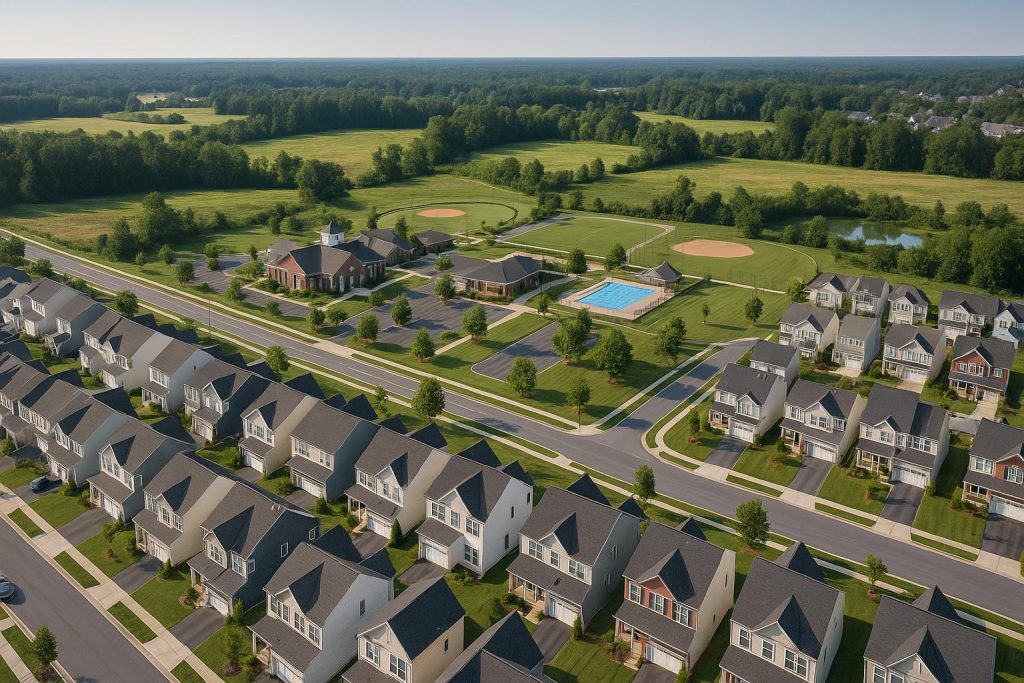Based in Ellicott City, Maryland, The Bob and Ronna Group of Samson Properties serves buyers and sellers across Maryland, Washington DC, Virginia, and Pennsylvania. Established in 2002 and veteran owned and operated, The Bob and Ronna Group combines deep local market knowledge with guidance that helps clients qualify for mortgages, craft competitive offers, and close efficiently. The team ranks among the top one percent of REALTORS in America and has completed billions of dollars in transactions. Known for tracking Maryland home sales, interest rates, and neighborhood trends, the team offers practical support like staging tips and a free moving truck for clients. The Bob and Ronna Group also manages the Veterans and First Responders Real Estate Advantage Program, which provides a cash back credit of up to 1,000 dollars at settlement and has returned more than two million dollars since 2018. This experience aligns directly with the topic of forecasting demand through community development patterns.
How to Predict Real Estate Demand Using Community Development Patterns
Predicting an increase in demand for real estate is not simply a case of guesswork. By assessing community development patterns like changes in transit access, land use regulations, amenities, employment clusters, and walkability, developers, investors, and planners can forecast demand with better precision. These patterns often serve as signals. For instance, when a neighborhood receives new transit investment, a surge in local jobs, and rezoning that permits denser housing, there is usually increased availability of local jobs and, subsequently, more buyers and renters. Combining these signals with data analytics gives decision-makers a proactive edge.
Some repeatable development patterns often precede raising property values. Transit-oriented development is one development pattern that often precedes a spike in real estate demand. Proximity and access to reliable transit increase the pool of potential residents and also reduce commuting friction, increasing demand for both owner-occupied and rental housing.
Walkability and street-level amenities are also important. Neighborhoods with connected sidewalks, high walk scores, and close grocery stores, active public spaces, and dining options often attract price premiums. This is because walkability indicates convenience and quality of life, a factor that many buyers (particularly younger households and empty nesters) hold in high regard. Studies have shown that walkable real estate sells faster, even at a higher price, compared to car-dependent neighborhoods.
Employment growth and the clustering of specific industries often create localized housing demand. When health systems, universities, corporate campuses, and research centers expand within a community, they create stable, high-wage job pools, which in turn increase the demand for nearby housing services. Also, regional strategies that promote technology transfer and incubate startups can transform academic and research centers into an ecosystem of long-term commercial and residential demand. This is why some governments use the establishment of higher institutions of learning to drive regional development.
For professionals in real estate and urban planning, a hypothesis-based approach helps transform data into actionable insights. Practitioners begin by identifying a potential demand driver, such as a new light rail line or university expansion, and then collect baseline data to establish early benchmarks. They test projections with local comparables, run scenarios for best- and worst-case outcomes, and validate their findings through pilot projects such as short-term rentals or small commercial developments. Once early results confirm the trend, experts rely on monitoring tools that track indicators like construction permits, transit use, and job creation. This approach allows developers and investors to move quickly and confidently when demand begins to materialize.
However, with prediction comes responsibility. As development intensifies around transit corridors or innovation hubs, housing prices can rise and displace long-standing residents. To prevent inequities, planners and policymakers should integrate affordability and inclusivity into forecasting models. Strategies such as community benefit agreements, diverse housing options, and transparent public consultations help ensure that growth benefits all stakeholders. By combining data-driven precision with social awareness, professionals can foster sustainable urban growth that balances economic opportunity with community well-being.
Community development patterns serve as strong indicators of future real estate demand when analyzed with the right data and insight. Transit expansion, improved walkability, growing employment hubs, and strategic zoning updates often signal areas poised for rising property values and faster absorption rates. Real estate professionals who combine local knowledge with advanced analytical tools can anticipate these shifts rather than simply react to them. By approaching development with both precision and a commitment to equitable growth, they can make well-timed investments that create lasting value for investors while supporting vibrant, inclusive communities.
About The Bob and Ronna Group
The Bob and Ronna Group, based in Ellicott City, Maryland, has helped clients buy and sell homes since 2002 within Samson Properties. The team serves Maryland, Washington DC, Virginia, and Pennsylvania, and ranks among the top one percent of REALTORS in America. Recognitions include leading Berkshire Hathaway HomeServices Team in Maryland and the Mid Atlantic Region since 2017 and number two Berkshire Hathaway HomeServices Team in the United States since 2023. The group offers practical client support and manages the Veterans and First Responders Real Estate Advantage Program, which has returned more than two million dollars since 2018.
Laila Azzahra is a professional writer and blogger that loves to write about technology, business, entertainment, science, and health.
